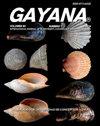智利北部科金博昌加海滩Zapallaren树鬣蜥(Liolaemus zapallarensis, m ller & Hellmich, 1933)冬季栖息地选择及其丰度
IF 0.2
4区 生物学
Q4 ZOOLOGY
引用次数: 0
摘要
城市发展改变了爬行动物的栖息地,我们期望它们选择具有永久性所需质量的可用地点。本研究的目的是确定在智利北部科昆博昌加海滩的冬季,有利于智利特有物种Zapalalen树Iguana Liolaemus zapalalensis栖息地选择和丰度的变量。2017年6月至9月,我们对18块900平方米的地块进行了30次随机访问。我们使用当地栖息地(例如,坡度、退潮时从防护墙到大海的距离、防护墙的内部高度、植被的平均高度、岩石表面和植物表面)和气候变量,估计了存在-缺失和丰度数据的资源选择概率函数(温度、大气压力、方向和风速、太阳辐射和平均云量)作为预测因素。植被覆盖是最重要的栖息地变量,解释了L.zapalalensis的存在。此外,云量和风速的增加降低了选择的概率。Manly的选择性测量根据既定的家庭范围和其中的可用性比率而变化。最后,云量和风速的增加降低了丰度。总体而言,我们的研究结果表明,与栖息地和当地气候相关的特征会影响有利于爬行动物生存的资源选择。这项工作表明,在人类压力下,城市环境中的海滩地区拥有重要的可用资源,有利于爬行动物的存在和丰富。本文章由计算机程序翻译,如有差异,请以英文原文为准。
Wintry habitat selection of the Zapallaren tree iguana (Liolaemus zapallarensis, Müller & Hellmich, 1933) and its abundance in Changa beach, Coquimbo, northern Chile
Urban development modifies the habitat of reptiles where we expect, the individuals to select available sites with the quality necessary for their permanence. The aim of this study was to determine the variables that favored the habitat selection and abundance of The Zapallaren Tree Iguana Liolaemus zapallarensis, an endemic species of Chile, during a winter season in Changa beach, Coquimbo, in northern Chile. Between June and September 2017, we made 30 random visits to 18 plots of 900 m2 each. We estimated a resource selection probability function for presence-absence and abundance data using local habitat (e.g. slope, distance from the protection wall to the sea at low tide, interior height of the wall, mean height of the vegetation, rocky surface, and vegetal surface) and climatic variables (temperature, atmospheric pressure, direction and wind speed, solar radiation, and mean cloudiness) as predictors. Vegetation cover was the most important habitat variable explaining the presence of L. zapallarensis. In addition, increase in cloudiness and wind speed decreased the probability of selection. Manly’s selectivity measure varied according to the established home ranges and the availability ratios within them. Finally, increase in cloudiness and wind speed decreased the abundance. Overall, our results show that the characteristics related to habitat and local climate influences the resource selection that favors the survival of reptiles. This work shows that beach sectors in urban contexts under anthropic pressure have important available resources that favor the presence and abundance of reptiles.
求助全文
通过发布文献求助,成功后即可免费获取论文全文。
去求助
来源期刊

GAYANA
Agricultural and Biological Sciences-Aquatic Science
CiteScore
0.60
自引率
0.00%
发文量
5
期刊介绍:
GAYANA is a scientific journal published by Universidad de Concepción, Chile. It is the modern version of Gayana Oceanología and Gayana Zoología. Therefore its numeration starts at volume 63(1).
GAYANA covers all aspects of zoology and oceanographic research. It is structured in five sections, defined by subject or discipline: Ecology, Biodiversity and Taxonomy, Earth Sciences, Evolutionary, and Applied Biology and Environmental Biology. Each section is in charge of an editor who receives and manages the manuscripts sent for evaluation in close collaboration with the editorial board.
 求助内容:
求助内容: 应助结果提醒方式:
应助结果提醒方式:


